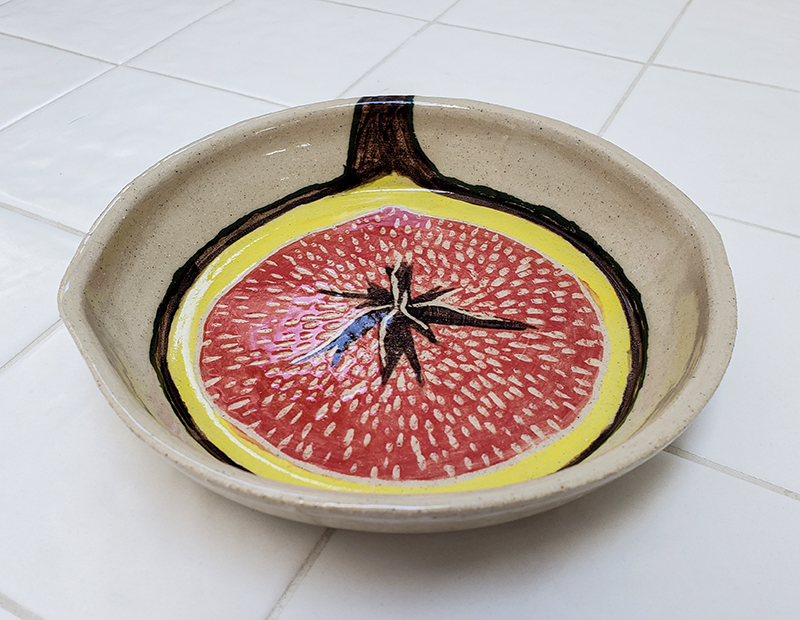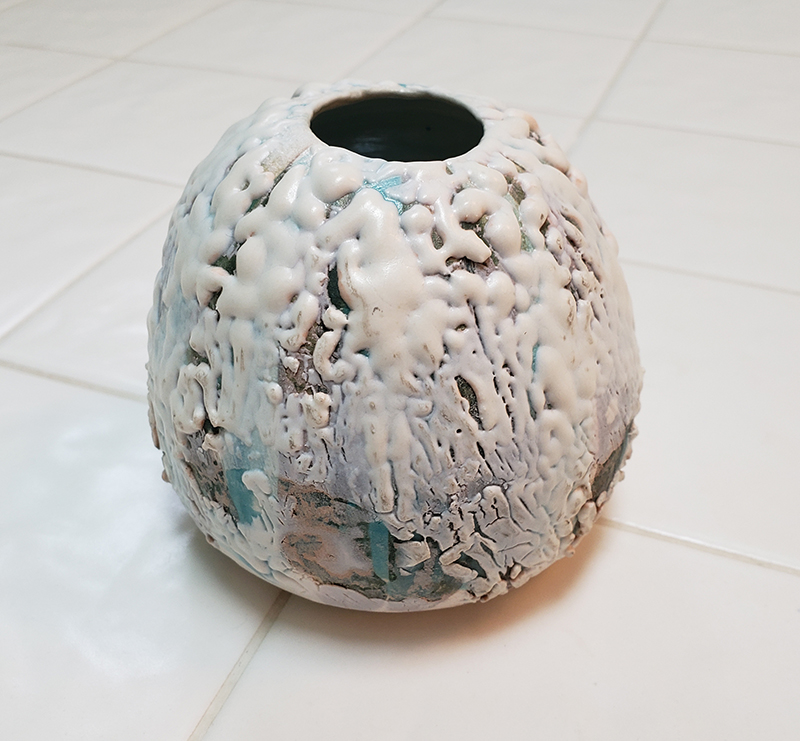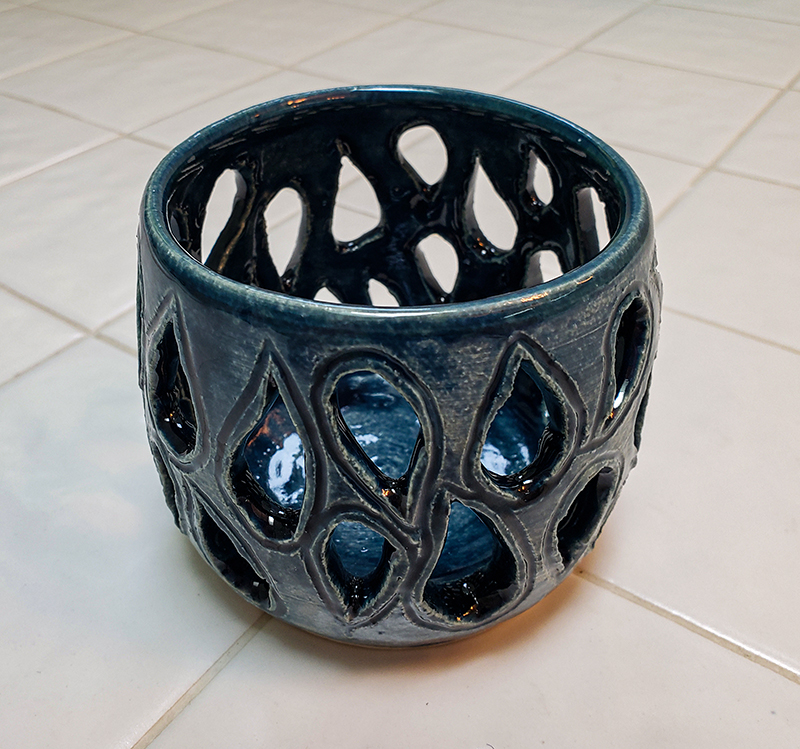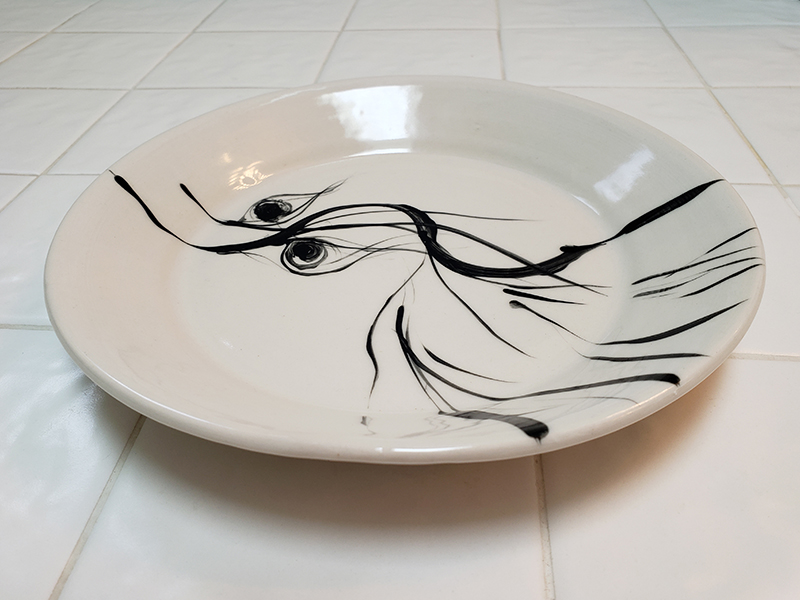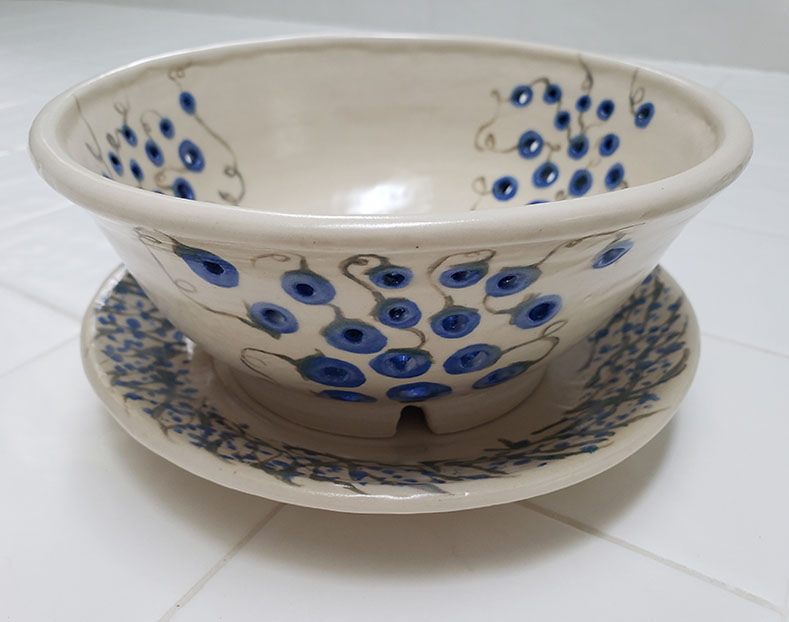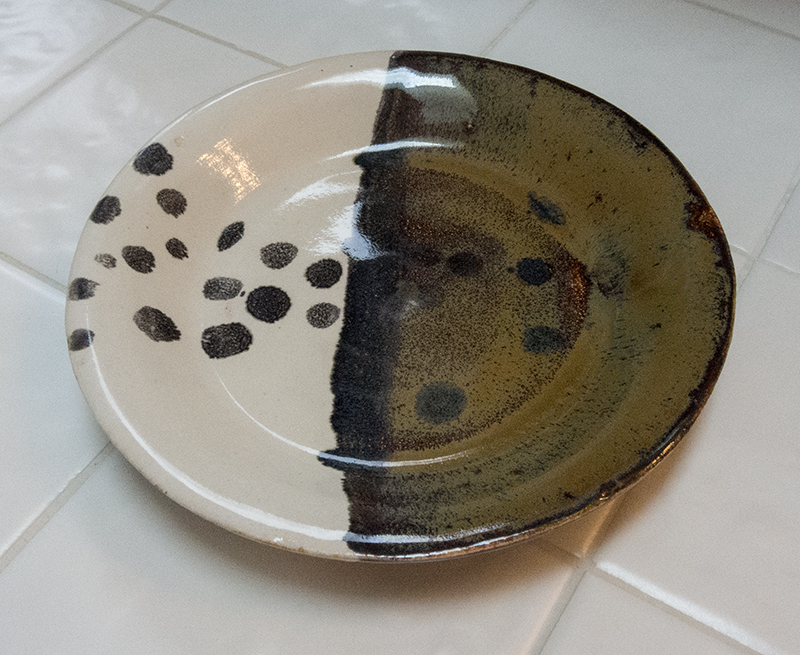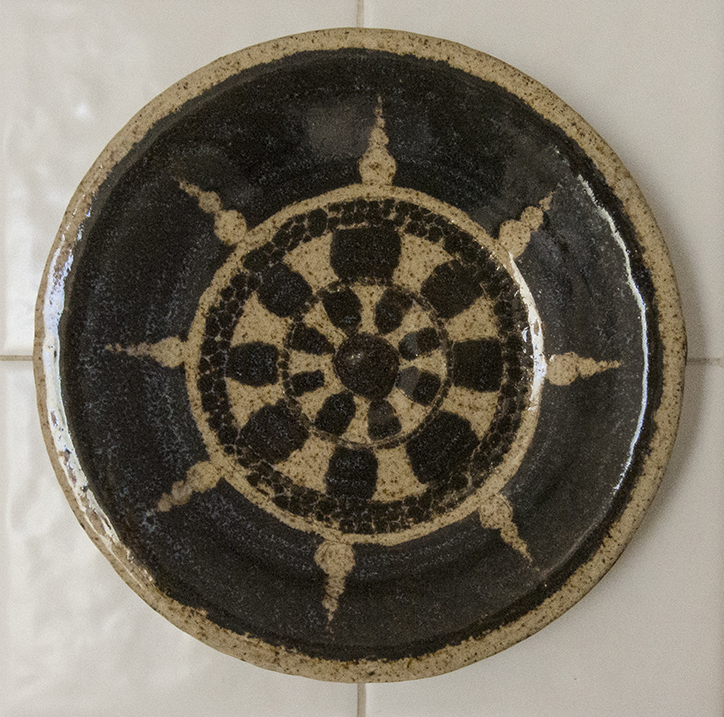



I haven’t posted much here lately because I’ve been too busy making. And preparing for my Masters show in November. Here is a sneak peek at some of my pieces. In addition to functional pieces, I’m also working on a possible sculptural narrative. I feel like I still have a long way to go, but that said, I’m heading for a two-week workshop in ceramic sculptural form at the Haystack School of Craft in Maine. Perhaps I’ll come back with new inspiration.
I used paper clay to create the impressionistic people in the sculpture pictured. So great working with paper clay. It’s pliable and light. When it survives through the bone dry and bisque stages without clumsy mishandling (and breakage) to the finished glaze product, it’s as strong as any other vitrified glazed piece.











